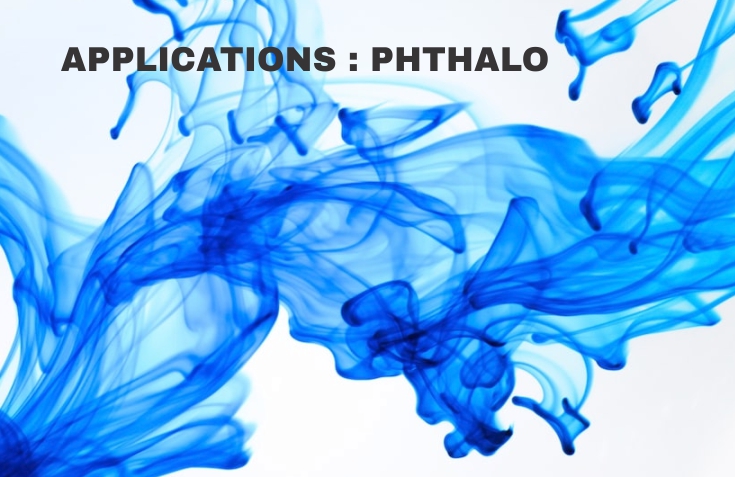
The copper phthalocyanine is by far the most important pigment of the phthalocyanine group. The outstanding good properties of this pigment include a bright blue shade, high tinctorial strength, resistance to acid, alkali, oxidising and reducing agents and to most organic solvents and high fastness to light and heat. The pigment is largely used in printing inks , also in lacquers, emulsion paints, distempers, rubber, plastics leather cloth and paper, further applications are found in textile printing and mass pigmentation processes.
Alpha-type crystallizing phthalo blue, the strongest and reddest type, is suitable for letterpress and offset inks, but cannot be used in solvent type inks. Aqueous dispersions of phthalocyanines are used in the formulation of textile, printing inks, in the formulation of soap powder and other cleaning products, and in a small degree to brighten roofing granules that contain ultramarine blue as the chief colouring component. Phthalocyanine pigments made possible the light blue and green tints in automotive coatings. The same shades are used in interior plastic seat coverings and other areas of interior use.
Phthalocyanine pigments are suitable for the colouring of practically all plastic materials. Their resistance to migration is excellent. The pigments show outstanding light fastness even in pastel shades and can be used for the colouring of plastics in these shades even under extreme conditions. They can thus be employed for colouring PVC roll shutter sections and boat hulls produced from unsaturated polyester resins. The phthalocyanine pigments show good transparency in crystal clear plastics. Vivid, opaque shades are obtained in combination with titanium dioxide and other opaque white pigments.
Other applications include the use of phthalocyanine in artist’s colours, in whitening and colouring paper, in colouring plaster, in colouring cements, Metal-free phthalocyanine may be used for shading letterpress and offset inks. A noncrystallizing type of metal-free phthalocyanine pigments must be used for shading solvent type inks.
It is used in printing inks, emulsion paints, paper, bookcloth linoleum, artist’s colours and numerous other products.
Phthalocyanine green can be utilised in following industry
a) Pigment Emulsions for textiles, dyeing and printing. (Pigments Preparations)
b) Printing inks. (Explore Pigments for Inks)
c) Paints of all types. (Explore Pigments for Paints and Coatings)
d) Plastic products. ( Explore Pigments for Plastics and Masterbatch)
e) Rubber products. (Explore Pigments for Rubber and EVA)
f) Synthetic detergents. (Explore Pigments for Detergent)
Some of the green toners extended with aluminium benzoate, whiting, or clay may also be available. They are also sold as press-cakes, aqueous dispersions, or as dispersions in printing ink vehicles, paint vehicles, nitrocellulose, plastics, rubber, plasticizers.
Qualitron Chemicals is one of the leading manufacturers of Pigments.
